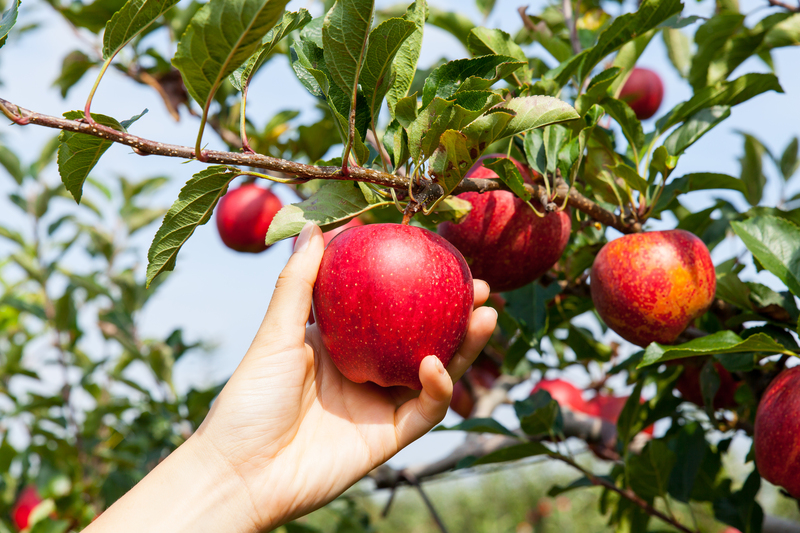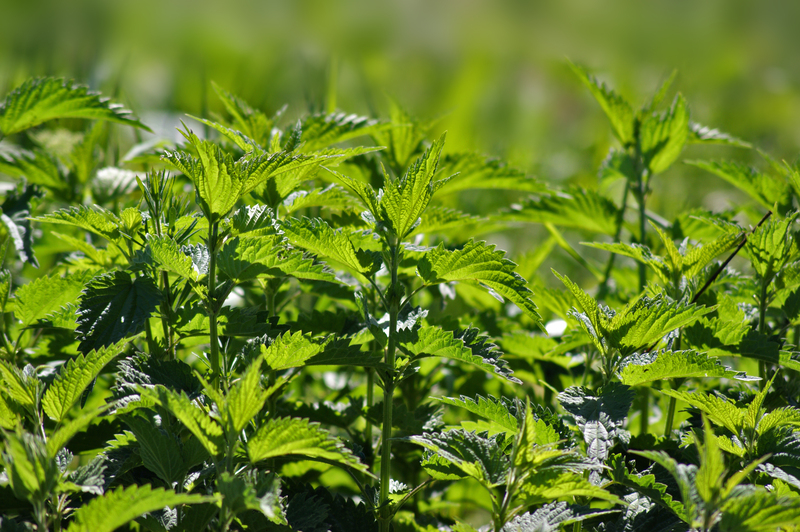Practical Tips for Dog Owners Who Love Gardening
Posted on 21/08/2025
Practical Tips for Dog Owners Who Love Gardening
If you adore tending to your garden but also have a four-legged friend who loves to dig, you are not alone. Many dog owners who love gardening face the joyful yet sometimes tricky challenge of creating a flourishing outdoor space while accommodating their pets' playful nature. In this comprehensive guide, you'll discover a wealth of practical gardening tips for dog owners, allowing you to cultivate beautiful, thriving gardens while ensuring your dogs remain safe, content, and well-behaved.
Why Gardening and Dogs Can Go Paw-in-Hand
Enjoying both dogs and gardening might seem complicated at first glance. However, with some strategic planning, you can design a yard that encourages healthy, happy dogs and a lush, vibrant landscape. The secret lies in choosing the right plants, planning pet-friendly zones, and establishing boundaries--making the garden enjoyable for both you and your canine companion.

Understanding Dog Behavior in the Garden
It's vital to understand what motivates your dog in the garden. Some dogs dig instinctively, others love chasing insects, and many relish a good run between your precious flower beds! Recognizing your pet's unique habits will help you tailor your garden's design and maintenance.
Common Garden Behaviors in Dogs
- Digging: Dogs may dig to cool off, relieve boredom, or hunt for critters.
- Chewing: Curious pups often chew leaves, stems, or sticks they find in the yard.
- Running paths: Dogs typically establish favorite routes around your garden, repeatedly running over the same patches.
- Resting spots: Many dogs select cool, shaded spaces for relaxing naps.
Designing a Dog-Friendly Garden
Dog owners with gardens can create a harmonious environment by integrating practical landscaping solutions. Here are some core concepts for planning a dog-friendly garden:
1. Identify Dog Zones and People Zones
- Set clear boundaries: Use low fencing, raised beds, or patios to demarcate areas where dogs are allowed and areas that are off-limits.
- Pathways for pups: Designate running paths with durable materials like flagstone, mulch, or decomposed granite to withstand paw traffic and minimize muddy paws indoors.
- Dog play spot: Incorporate a dedicated digging pit or sandbox for dogs who can't resist digging, redirecting their energy away from flowerbeds.
2. Choose Dog-Safe Plants and Materials
- Non-toxic plant choices: Select pet-friendly plants, such as sunflowers, marigolds, snapdragons, and fuchsias. Always avoid toxic plants, including azaleas, daffodils, lilies, foxgloves, oleander, and sago palms.
- Mulching materials: Use pet-safe mulch--pine, cedar, or shredded bark. Steer clear of cocoa mulch, which contains theobromine and is very toxic to dogs.
- Hardscaping solutions: Pave high-traffic areas with dog-friendly hardscape materials, which are easier to clean and reduce the wear and tear on your lawn.
3. Safe Garden Structures
- Install secure fencing that your dog cannot jump over or dig under--this keeps both pets and plants safe.
- Use raised planting beds to protect vulnerable flowers and edibles from curious noses.
- Consider shaded pergolas, doghouses, or cooling fountains to offer dogs respite from the sun.
Training Dogs to Respect Your Garden
Training is paramount for the dog and garden relationship to be mutually beneficial. It may require a little patience, but setting clear boundaries teaches your canine how to behave in your cherished outdoor space.
Reward Good Behavior
- Positive reinforcement: Consistently reward your dog for staying within designated zones or resisting the urge to dig.
- Use treats and praise: Carry treats with you while gardening and offer them for good behavior, helping your pet learn the difference between the dog's space and your flowerbeds.
Discourage Unwanted Behaviors
- Supervised play: Keep an eye on your dog, especially when introducing them to new areas of your garden.
- Redirect digging: Politely interrupt digging in your garden beds and guide your pet toward a designated digging pit, rewarding them for the right behavior.
- Scents as deterrents: Natural repellents like citrus peels or vinegar along garden borders can discourage dogs from entering off-limits areas (never use chemicals harmful to pets!).
Dog-Proofing Your Garden
Dog-proofing your garden is essential for both protecting your plants and ensuring your pet's safety. Here are some expert-backed, practical tips:
- Secure compost bins: Compost can contain foods toxic to dogs or sharp objects. Keep bins tightly shut and out of reach.
- Store chemicals safely: Pesticides, fertilizers, and herbicides should always be kept in locked sheds or cabinets. Use pet-safe alternatives wherever possible.
- Prevent harmful ingestion: Clean up fallen fruits, bulbs, and cuttings to prevent your dog from eating plant materials they shouldn't.
- Cover ponds and pools: Not all dogs are natural swimmers. Use fencing or mesh barriers to keep them safe around water features.
Paw-Friendly Lawn and Ground Cover Solutions
The key to maintaining a lovely garden as a pet owner is to optimize your lawn and ground covers for dog durability and comfort. The right surfaces can withstand playful digging, heavy traffic, and regular bathroom trips.
Best Types of Grass for Dog Owners
- Bermuda Grass: Durable and fast-repairing, great for active dogs.
- Fescue: Grows well in shade and is tolerant of wear and tear.
- Buffalo Grass: Low growing and drought resistant, ideal for low-maintenance gardens.
- Kentucky Bluegrass: Recovery from pet damage is quick and it's soft underfoot.
Alternative Ground Covers
- Clover: Stays green, resists pet urine staining, and is soft for rolling around.
- Artificial turf: Easy to clean and hard-wearing--great for small gardens or dog runs.
- Mulch or stone: Use with caution and supervision. Choose large, smooth stones or pet-safe wood mulches.
Pet-Safe Garden Maintenance
Maintaining a garden when you own a dog requires ongoing vigilance. Here's how to ensure that your green oasis remains beautiful, and your pets stay healthy:
- Watering schedules: Water in the early morning or late evening to give soil and plants time to absorb moisture before your dog enters the garden.
- Monitor for pests: Avoid slug pellets, rodenticides, and chemical traps. Instead, use pet-friendly deterrents or physical barriers.
- Clean thoroughly: Regularly pick up after your dog and remove debris, which helps prevent disease spread and keeps plants healthy.
Apartment Dwellers: Indoor Gardening with Dogs
Dog owners who live in apartments or homes without yards can still pursue their gardening passion!
- Container gardening: Use sturdy planters and heavy pots that can't be easily knocked over by playful pups.
- Hang plants: Install shelves or hooks to keep delicate plants out of reach.
- Choose safe houseplants: Spider plants, Boston ferns, and African violets are non-toxic. Always check plant safety before purchase.
Seasonal Advice for Gardening with Dogs
Each season presents unique challenges and opportunities for dog owners who garden. Here are tips to keep pets and plants thriving all year:
Spring
- Reinforce boundaries: After winter, check and repair fences or barriers to prevent escape.
- Inspect for toxic bulbs: Many spring bulbs, like tulips and daffodils, are harmful to dogs--keep these out of reach.
Summer
- Provide shade and water: Set up shady spots and water bowls in multiple garden zones.
- Avoid over-fertilizing: Excess chemicals can burn your pet's paws.
Autumn
- Leaf control: Piles of leaves can harbor mold or toxic mushrooms. Rake and remove regularly.
- Secure compost: Fallen fruits and vegetables may entice dogs; remove decomposing matter promptly.
Winter
- Paw care: Clean your dog's paws after walks or romps--they can pick up rock salt or ice melt, which is irritating or toxic.
- Protect dormant beds: Temporary fencing helps keep dormant garden beds safe during winter play.

Creating Enrichment for Dogs in the Garden
One of the best aspects of sharing your garden with your dog is using outdoor time for stimulation and enrichment.
- Scent trails: Hide treats around the garden or in the digging pit to encourage natural sniffing behavior.
- Toys and obstacles: Integrate agility equipment or durable dog toys to keep your pet entertained and less interested in bothering your plants.
- Socialization: Invite friends and their dogs over for playdates, keeping interactions positive and supervised.
Conclusion: Flourishing Together--Harmony for Dog Lovers and Gardeners
With deliberate choices and ongoing care, dog owners who love gardening can shed the worry that comes with balancing pets and plants. By using these practical, dog-friendly gardening tips, you'll cultivate a space where blossoms thrive and tails wag. Remember to select pet-safe plants, set clear garden boundaries, and train your furry family members, making your garden a vibrant, harmonious oasis for everyone to enjoy. Happy gardening!

